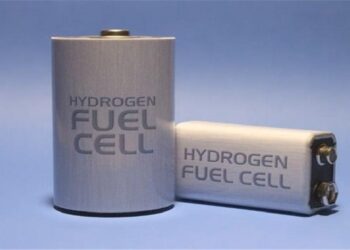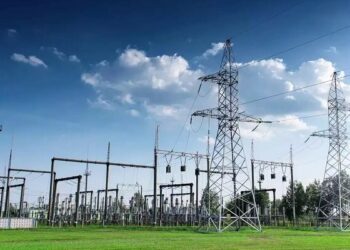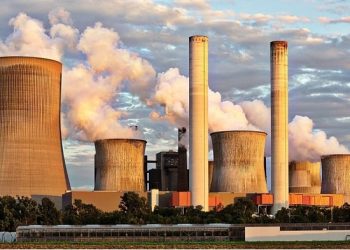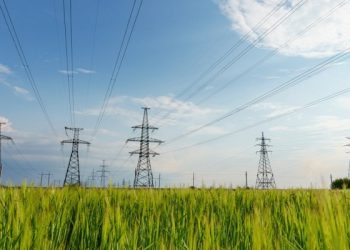The 4,440MW Belchatów power plant is located near Belchatów in the lódz province of Poland. Operated by PGE Elektrownia Belchatow (PGE), it is the biggest lignite-fired power plant in Europe. The plant was commissioned in 1988 and currently accounts for 20% of the Polish power market.
In January 2011, PGE commissioned the 13th unit with a capacity of 858MW. The new unit has the highest efficiency of 41% and conforms to European standards on green house gas emissions. The generator was commissioned in September 2011.
“Prior to the expansion, the Belchatów plant had 12 units of 360MW each.”
Retrofit of the existing units is also underway to increase the design life of the plant by 25 years.
Plant make-up
Prior to the expansion, the Belchatów plant had 12 units of 360MW each. All of the units are equipped with a BB-1150 boiler, an 18K360 turbine and a GTHW-360 generator. Coal is supplied to the plant from a nearby coal mine through conveyor belts.
Plant details
With a heat capacity of 750Gcal/h and performance rating of 1,150t/h, the boilers have spirally wound furnace walls and are suspended on a grate carrier supported by four pillars. Design of the boiler features a low load circulation system.
Coal is fed into the combustion chamber through a scraper and belt feeders. Eight mazut burners are used to light the coal with air supplied by two air fans and exhaust fans. The combustion chamber of the boiler features two circulating pumps.
Superheated steam generated by the boiler is sent to single shaft turbines. The turbines feature four control valves and are rated at 370MW with a turnover of 3,000rpm. A programme to modernise the turbines was carried out between 1997 and 2004, which increased the capacity by 10MW and reduced heat energy consumption by 210KJ/kWh.
A synchronous generator with a bipolar structure and cylindrical rotor generates electricity.
Development
In April 2009, PGE launched a retrofit programme for unit 6 of the power plant to increase the unit’s output to 390MW-400MW.
The upgrade programme will retrofit the turbines and auxiliaries, electro-hydraulic control system and instrumentation and control (I&C) equipment. The boiler firing system will be upgraded to reduce emissions to 200mg/Nm³ for CO and NOx. A new distributed control system, eight new pulverised coal burners and a flue gas heat exchanger will also be added to the unit.
In 2010, another retrofit project for units 7 to 12 was launched to increase their capacity by 20MW each. High pressure and intermediate pressure turbines and auxiliaries, bypass systems and I&C equipment will be installed as part of the retrofit. New electrostatic precipitators will also be installed to reduce emission levels to 50mg/Nm³.
The contract for the retrofit programme was awarded to Alstom in March 2011.
“Alstom was awarded a €160m contract in 2009 to retrofit the unit 6.”
IFS implemented an ERP system at the plant, which helped in quick access to operational data and enhanced document management.
Emerson was contracted in November 2009 to carry out the modernisation of units 5 and 6. The company had earlier won a contract to automate units 3 and 4. Under the 2009 contract, Emerson installed its PlantWeb digital plant architecture and Ovation expert control system to upgrade the units’ I&C.
Emerson will also install 110 Rosemount wireless temperature transmitters on the boilers to monitor temperatures. The project will help in reducing the CO2 emissions to 200mg/m³ and the NOx emissions to 200mg/m³.
In February 2011, Emerson won another contract worth $95m to automate units 7 to 12.
The units 7 and 8 of the plant are planned to be shut down in January 2012 and June 2012 respectively for modernisation. These units will be recommissioned in 2013.
Contractors
Rafako constructed the boilers for the plant with technology licensed from Sulzer and EVT.
The turbines were manufactured by Zamech under a license from Brown Boveri & Cie (now part of ABB). The generators were manufactured by Dolmel (now part of Alstom Power). Hayward Tyler supplied the circulating pumps.
In 2008, Hempel provided its high quality protective coatings for the cool water pipelines of the plant. Babcock Borsig Service was awarded a contract in 2009 to supply flue gas displacement system for units 5 and 6.
SGS served as the technical consultant for the 13th unit of the plant. PERI supplied a falsework combination consisting of ST 100 stacking towers and MULTIPROP aluminium slab props for the 13th unit. ME Construct was also involved in the construction of the unit.
Alstom was awarded a €160m contract in 2009 to retrofit the unit 6. In October 2010, Alstom was awarded another retrofit contract worth €140m for units 7 to 12.
Pollution issues
The Belchatów plant is considered to be one of the biggest producers of greenhouse gas emissions in the EU, emitting about 30mt/y of CO2. To reduce the emissions from the plant, PGE has launched a two phase programme to build carbon capture plants (CCP).
In the first phase, a pilot CCP will be built at unit 12. The pilot CCP will use Alstom’s Advanced Amine Process with amine solvent supplied by Dow Chemical. It will capture about 100,000t/y of CO2.
In the second phase, a bigger plant will be built to capture carbon emissions from the new 858MW unit. The new plant will capture 1.8mt/y of CO2 and is expected to be operational by 2015. The project will require an investment of $776m and has received a €180m grant from the European Investment Bank in May 2010.








































